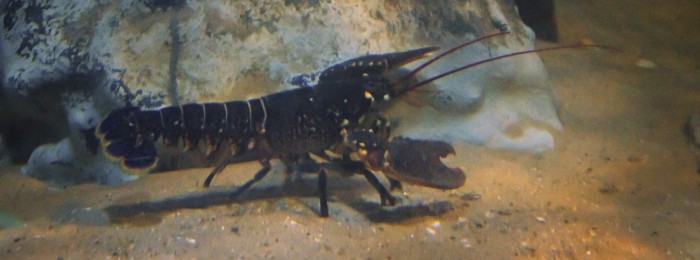01843 585310
info@kentandessex-ifca.gov.uk

01843 585310
info@kentandessex-ifca.gov.uk

Hommarus gammarus The lobster is the largest of the crustacean species we have in UK waters and inhabits the lower shore up to depth of 60m. A solitary nocturnal species, lobsters prefer areas of sea bed where there is ample opportunity for them to hide during the daytime.
This often includes crevices in rocks or wrecks but can also be in the form of tunnels dug by the lobsters in relatively firm sediment under rocks as well. Like all crustaceans, lobsters grow by moulting their exoskeleton and forming a new, larger one. During this process, lobsters will tend to hide where they are safe from predation due to their soft and vulnerable state during the moulting period.
Females become reproductively active after around five years when they are able to retain a sperm transfer from a male to fertilise her eggs internally when she is ready. Once fertilised, eggs are carried externally attached to the swimming pleopods on her abdomen to be kept oxygenated as they develop. This is when she is referred to as berried and lasts around 9 months during which she will not moult. Unlike finfish and gastropods, lobsters cannot be aged easily with growth rates highly dependant on feeding habits, water temperature and levels of energy spent on repair rather than growth when moulting.
Survival of the pelagic larval stages in the water column before settlement on the sea bed is relatively low. While juveniles predate on a mixture of small molluscs echinoderms, other small crustacean and annelids, they themselves are the prey of a variety of fish and other crustacean species including larger adult lobsters. Being a nocturnal predator which hides in deep burrows under rocks and in crevices in the day time, adult lobsters are rarely predated on by other species except humans.
© Kent & Essex IFCA 2025 - All Rights Reserved | Privacy Policy